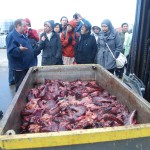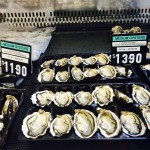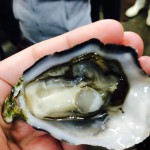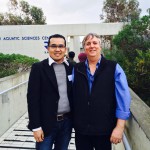Our Master of Global Food and Agricultural Students actively seek opportunities to further develop their professional network and research capacity. One of our students Mr Ade Wiguna Nur Yasin was selected to be a delegate at the ‘SAMUDRA program’ funded by Australia Awards to learn more about Australian marine sector. Here more about his story below.
Insightful experience from attending SAMUDRA program
By Ade Wiguna Nur Yasin
Fisheries are not as big as agricultural industry for Australia. But, the sector is really valuable, particularly for high value products, such as salmons, abalone, oysters, and tunas. The development of Australian fisheries sector is quite interesting to learn, especially how technological advances can drive competitive fisheries industry. From 3 to 6 August 2015, I have got a very insightful experience to attend ‘SAMUDRA’ (Skills and Awareness in Marine Understanding – Discoveries, Resources, and Achievements) program, an abbreviation that means ‘ocean’ in Indonesian language. The program provided me opportunities to learn how Australia manages the sector and to conduct site visits to some relevant institutions and industries.
Thank you for Australia Awards for Indonesia who had organised this event.
What I was interested in that event is that the meaning of competitive industry, particularly tuna. This aspect is related to my research study titled “Applying a Sectoral System of Innovation (SSI) to Assess Options for Increasing the Value of the Tuna Industry in Indonesia” under Dr. Susan Nelle’s supervision. The study is part of the requirement for the completion of Master of Global Food Studies and Agricultural Business degree.
Compared to other global fisheries players, Australia has only contributed a small percentage of total wild catch and aquaculture production. However, this industry is able contribute a significant amount of value for the economy. Southern Bluefin tuna (SBT) is a highly valuable product, selling at high prices in Japanese market for fresh sashimi. A unique ranching technology, where tuna is fattened in a controlled environment has given a great competitive advantage for Australian SBT. This industry is located in Port Lincoln, about 35 minutes by plane, from Adelaide.
Furthermore, a competitive tuna industry is strongly supported by various government institutions and science and technology providers, such as SARDI. SARDI aims to foster enterprises to catch up the market potentials. I could see how those organisations work hand in hand to support businesses with solutions and looking for space to pursue market potentials. And what is worth to pointing out is that the significant role of industry association, which is the Australian Southern Bluefin Tuna Industry Association (ASBTIA), as the hub of interaction between industry, government, and science and technology providers. On top of that, they come with a strong business model, which is very important for the sector. I was lucky to meet Brian Jeffriess, CEO of ASBTIA and hear his experience in the industry.
Tuna is a high value commodity. Yet the stock is limited. Its stock is assessed globally and countries conducting tuna fishing have to agree with quota i.e. the total allowable catch annually for a specific tuna species. For SBT, both Australia and Indonesia have to comply with CCSBT (Commission for the Conservation of Southern Bluefin Tuna).
Relying on catch has given a big challenge against uncertainty, particularly for Indonesia. In Indonesia, unsustainable fishing activities are evident and these may significantly reduce the resources.
I like an idea of innovation towards more valuable tuna industry.
Tuna industry is very important for the Indonesian economy. Emphasizing ‘innovation’ as a framework for fisheries development is important for Indonesia. Indonesia is facing a great impediment to deal with the numbers of artisanal and high incidence of illegal, unreported, and unregulated fishing that hampering the sustainability of fisheries. At the same time the government is trying to promote more value for the industry to increase export earnings and Indonesia’s global competitiveness. Much work should continue to be done through partnerships between the public and private sector as well as research communities.
Instead of visiting tuna ranch, I also had a chance to visit yellow king fish ranches, located near tuna ranches, visiting small seafood producers and oysters, and tasted those live oysters too. During the event, I had some lectures from key institutions related to fisheries, such as from AFMA (Australian Fisheries Management Authority), Ms. Kylie Tonon, Ms. Kelly Robinson, Department of Agriculture, from Animal Biosecurity, aquatics section, Dr Peter Stoutjesdijk, Australian Centre for International Agricultural Research (ACIAR), A/Professor Jesmond Sammut, Australian Maritime Fisheries Academy, Mr. Bob Miller Australian Border Force, Mr. Andrew Hudson, SA Research and Development Institute for Aquatic Science, Mr. Steven Clarke, South Australia Marine Products Industry, Mr. Paul Smith, ASBTIA, Mr Brian Jeffriess and Ms. Claire Webber, and fisheries consultant and pelagic fish expert, Mr. Phil Domaschenz.
I am working for the Indonesian Ministry for Marine Affairs and Fisheries for marine and fisheries industry competitiveness. I am excited to implement the knowledge and skills what I have acquired during my study at Global Food Studies program to assist the Indonesian government develop its fisheries sector!
*This post also appears on GoLive Indonesia blog.














